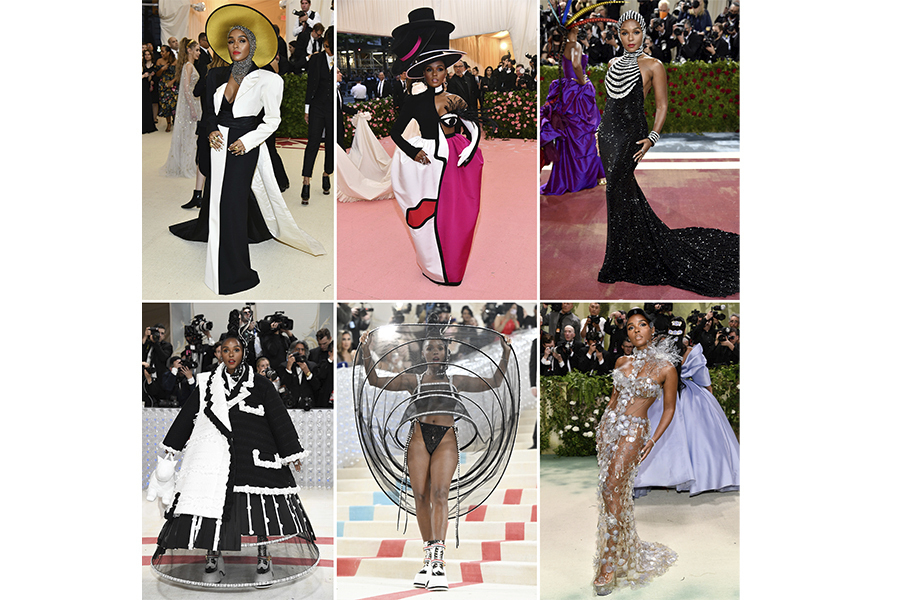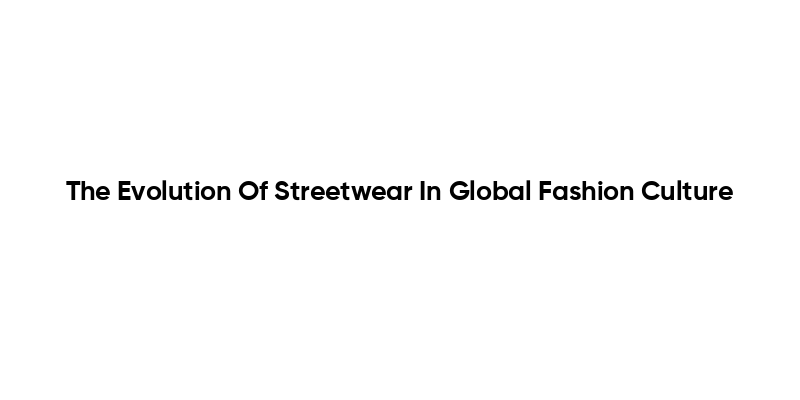Black dandyism emerges as a vibrant expression of cultural identity and self-assertion within the fashion world. This spring, the Metropolitan Museum of Art shines a spotlight on this fascinating concept through its exhibition, Superfine: Tailoring Black Style. Delving into the complex intersections of style, masculinity, and identity, the exhibit pays homage to Black designers who have historically been overlooked in broader fashion narratives. Influenced by the charismatic André Leon Talley, renowned for his flamboyant fashion choices, the exhibition investigates how attire serves not just as a form of self-expression, but also as a profound cultural critique. By embracing Black dandyism, the exhibition invites viewers to explore the historical evolution of Black sartorial styles, offering fresh perspectives on the dynamic nature of fashion within the African diaspora.
The exploration of dandyism within the Black experience extends beyond mere style; it weaves together elements of sophistication, identity, and cultural heritage. This nuanced aesthetic captures a distinct consciousness among Black men, reflecting their history and resilience through fashion. The term ‘dandy’ denotes an individual who meticulously crafts an elegant personal style, making statements that resonate on both personal and societal levels. By intertwining historical contexts with contemporary influences, this dialogue fosters a deeper understanding of how fashion becomes a vehicle for the Black community’s reclamation of identity and agency. The exhibition’s curatorial choices highlight the rich tapestry of Black sartorial expression, celebrating the contributions of both past and present designers while challenging conventional narratives in the fashion industry.
Understanding Black Dandyism: A Cultural Exploration
Black dandyism transcends mere fashion; it is a compelling cultural phenomenon that reflects identity, autonomy, and self-expression. This exhibition, Superfine: Tailoring Black Style, sheds light on how Black dandyism has evolved over centuries, particularly in the context of Black males asserting their presence within societal spheres that have historically marginalized them. The rich history presented in the exhibit aligns with key concepts from Monica L. Miller’s book, Slaves to Fashion, emphasizing how fashion serves as a narrative vessel for the complexities of Black life.
By focusing on figures like André Leon Talley, the exhibition showcases how Black individuals have used dandyism not only to express themselves but also to challenge societal norms. Talley’s flamboyant style and role as a fashion pioneer reveal the intersection between aesthetics and cultural critique, illustrating fashion as a vehicle for broader socio-political dialogues. This exploration within the context of the Metropolitan Museum’s exhibition poses a significant inquiry into how dandyism has provided a vital framework for negotiating identity within Black communities.
The Legacy of André Leon Talley in Fashion
André Leon Talley’s influence on the fashion world cannot be overstated. As the first Black creative director of Vogue, his larger-than-life persona and distinct taste carved paths for future generations of designers and stylists. The Superfine exhibition recognizes his contributions, celebrating how he embodied the essence of Black dandyism through luxurious ensembles that made bold statements about Black identity and prestige in a predominantly white industry. His legacy remains a cornerstone for understanding the ongoing narrative of Black representation in fashion.
In reflecting upon Talley’s impact, the exhibition intertwines his story with those of other Black designers who have faced similar challenges in the industry. By showcasing pieces that exemplify Talley’s aesthetic alongside modern work by designers like Grace Wales Bonner, the show highlights a lineage of creativity and resilience. This approach honors Talley’s role in a cultural narrative where Black designers are acknowledged and celebrated, reinforcing the importance of representation and visibility in a historically exclusionary fashion landscape.
Exploring the Thematic Sections of the Exhibit
The Superfine exhibition is divided into twelve thematic sections that encapsulate different dimensions of Black sartorial expression, including Respectability, Disguise, and Heritage. Each section offers a rich array of garments and artifacts that tell stories of survival, dignity, and pride. The striking uniform displayed in the Respectability section, for instance, serves as a poignant reminder of the complex history surrounding Black identity and the quest for respect and agency through fashion. This historical grounding provides context for contemporary expressions featured throughout the exhibit.
Additionally, the thematic categorization allows visitors to engage with the multifaceted nature of Black dandyism. For example, the Disguise section may highlight how fashion has been used as a means of both concealment and revelation, aligning with cultural critiques of the fashion industry’s often rigid narratives. Through these carefully curated themes, the exhibit facilitates an understanding of how Black designers and their works have not only contributed to the aesthetic landscape but also have become vital narratives within broader conversations of race, identity, and art.
The Influence of Contemporary Black Designers
Contemporary Black designers such as Olivier Rousteing of Balmain and Pharrell Williams are prominently featured in the Superfine exhibition, showcasing modern interpretations of Black tailoring and aesthetics. These designers draw upon the rich heritage of Black dandyism while infusing it with fresh ideas and global influences, demonstrating how fashion continues to evolve. Their presence in the exhibit not only amplifies their individual artistry but also situates their work within a larger historical context of Black excellence and innovation in fashion.
By juxtaposing historical pieces with contemporary designs, the exhibition creates a dialogue between past and present. The inclusion of works from contemporary Black designers serves to highlight the ongoing journey of reclaiming space in the fashion industry, reflecting themes of empowerment and identity. This synthesis of past and present is vital for understanding the complexities of Black influence on fashion, as it underscores the continuum of creativity and resistance that defines Black dandyism today.
Fashion as a Cultural Critique
The Superfine exhibition functions not only as a showcase of sartorial brilliance but also as a powerful cultural critique of the fashion industry itself. By grappling with the nuances of Black identity, the exhibit interrogates the historical erasure of Black narratives in fashion. As the exhibition progresses through various sections, it becomes evident that each garment not only represents style but also an assertion of presence in a societal context that has often sidelined Black contributions.
Cultural critique is engrained in the very fabric of dandyism, often challenging and redefining norms around masculinity and aesthetics. The exhibition emphasizes this by offering visitors a multifaceted perspective on how fashion serves as a site of resistance and dialogue for marginalized voices. This approach allows for a more profound understanding of Black dandyism as a cultural commentary, encouraging visitors to reflect on broader societal issues interwoven with personal and collective identity.
The Role of Historical Context in Fashion Narratives
Understanding the historical context of fashion is critical when assessing the contributions of Black designers and their influence on contemporary style. The Superfine exhibition provides an insightful exploration of how clothing has historically been tied to themes of freedom, dignity, and resistance. By showcasing items from different eras, such as the striking uniform belonging to an enslaved individual, the exhibit evokes emotional responses and fosters critical conversations about agency and representation.
Moreover, the exhibition draws parallels between historical oppression and the modern iterations of Black dandyism today. By framing contemporary fashion choices as modern expressions of longstanding struggles for recognition, the exhibit reinforces the idea that fashion is a living history. This narrative invites viewers to engage deeply with the concept that every garment carries stories of its wearer’s journey, highlighting the intersection of personal and cultural histories within the fashion realm.
Connecting Themes of Sexuality and Gender
The examination of Black dandyism within the Superfine exhibition also delves into the interconnections of sexuality and gender, presenting a dynamic interplay that challenges conventional norms. By showcasing how Black masculinity can encompass flamboyance alongside a spectrum of expressions, the exhibit opens pathways for discussions surrounding gender identity and sexual liberation. This critical lens addresses how traditional gender roles have been subverted by the stylish assertion of self that dandyism embodies.
Through the lens of dandyism, viewers are invited to reconsider societal expectations and embrace a more fluid understanding of gender expression in fashion. The exhibition encourages a dialogue on how style becomes a statement of personal identity and agency, particularly for those navigating complexities of race in a multicultural world. This nuanced exploration broadens the narrative surrounding Black dandyism, emphasizing the diverse and vibrant experiences within the community.
An Inclusive Approach to Fashion History
The Superfine exhibition’s commitment to an inclusive approach is evident in its diverse representation of Black designers and cultural voices. By spotlighting a range of creators, including those who have historically been marginalized, the museum emphasizes the importance of inclusivity in conversations about fashion history. This focus aligns with the ongoing discussions about representation within the fashion industry, advocating for voices that have long been silenced.
This exhibition serves as a platform for educating audiences on the significant contributions of Black designers throughout history, inviting them to appreciate the creative tapestry that has shaped modern fashion. By presenting a spectrum of experiences and narratives, the exhibition fosters a sense of community and belonging, ultimately striving for a more equitable landscape in which all voices are acknowledged and celebrated.
Conclusion: The Ongoing Journey of Black Dandyism
In conclusion, the Superfine exhibition not only showcases the exquisite aesthetics of Black dandyism but also encapsulates the ongoing journey toward recognition and empowerment in the fashion world. Through its multifaceted approach, it highlights the complexities and rich histories embedded in Black sartorial style. By weaving narratives of personal expression, cultural critique, and historical significance, the exhibition presents a powerful testament to the resilience of Black designers and their influence on contemporary fashion.
As audiences leave the exhibit, they are not only enriched by the visual splendor but also engaged in a deeper understanding of the narratives that shape Black dandyism. This exhibition is more than a celebration of style; it is a call to acknowledge and embrace the stories behind fashion, urging a collective re-evaluation of who has historically been allowed to define beauty and elegance in the fashion industry.
Frequently Asked Questions
What is Black dandyism and how is it represented in the Metropolitan Museum fashion exhibition?
Black dandyism is an expressive style that emphasizes elegance and fashion within the context of Black identity. The Metropolitan Museum’s exhibition, titled Superfine: Tailoring Black Style, showcases how Black dandyism has shaped notions of masculinity and self-expression while reclaiming the contributions of Black designers historically sidelined in the fashion industry.
How does the exhibition Superfine: Tailoring Black Style address the contributions of Black designers in fashion?
The exhibition highlights the essential roles Black designers have played in fashion, featuring over 200 items that range from historical garments to contemporary pieces. It serves as a platform to celebrate creators often ignored in mainstream narratives, thus reclaiming their contributions while emphasizing the impact of Black dandyism.
What influence did André Leon Talley have on the concept of Black dandyism presented in the exhibition?
André Leon Talley was an influential figure in fashion who embodied Black dandyism through his extravagant style and significant role as Vogue’s first Black creative director. His larger-than-life persona and passion for luxury fashion are integral to the narrative explored in the Superfine: Tailoring Black Style exhibition, commemorating his legacy and influence.
How does the Superfine exhibition explore themes of cultural critique related to Black dandyism?
The Superfine: Tailoring Black Style exhibition critiques cultural narratives by showcasing how Black dandyism serves as both an aesthetic choice and a political statement. Through its examination of fashion, the exhibit challenges stereotypes while promoting a deeper understanding of Black identity and its complexities.
What historical significance does Black dandyism hold in relation to Black masculinity as depicted in the exhibition?
Black dandyism is historically significant as it represents a form of self-assertion and identity negotiation for Black men. The Superfine exhibition delves into this narrative, illustrating how fashion has been utilized over the centuries to express autonomy and challenge societal expectations, thereby influencing modern perceptions of Black masculinity.
What types of exhibits can visitors expect to see that reflect the essence of Black dandyism?
Visitors to the exhibition can expect to see a diverse array of items, including exquisite suits, accessories, and photographs organized into thematic sections such as Respectability, Disguise, and Heritage. These elements collectively illustrate the evolution of Black dandyism and its powerful narrative within the Black experience.
How does the concept of autonomy relate to Black designers showcased in Superfine: Tailoring Black Style?
The concept of autonomy is central to the narrative of Superfine: Tailoring Black Style, as it highlights how Black designers and dandyism historically empowered individuals to reclaim their identities through fashion. This reclamation of style acts as a means of self-expression and assertion of presence within societal frameworks.
What are some examples of contemporary Black designers featured in the exhibition?
Contemporary Black designers showcased in the Superfine exhibition include Grace Wales Bonner, Olivier Rousteing of Balmain, and Pharrell Williams of Louis Vuitton. Their work represents the ongoing legacy of Black dandyism and signifies a vibrant contribution to the evolution of fashion.
How does the exhibition address the intersection of Black dandyism with themes of sexuality and gender?
Superfine: Tailoring Black Style examines how Black dandyism intersects with various themes, including sexuality and gender, by showcasing fashion as a tool for negotiating complex identities. The exhibition invites viewers to explore how dandyism serves not only as a style but also as a means of challenging societal norms.
What impact does the exhibition Hope to achieve regarding the representation of Black culture in fashion?
The Superfine: Tailoring Black Style exhibition aims to foster a deeper appreciation for Black cultural narratives in fashion, by reclaiming the legacy of Black dandyism and showcasing the contributions of marginalized designers. It strives to provide a multifaceted perspective of Black identity and history through the lens of fashion.
| Key Themes | Details |
|---|---|
| Black Dandyism | Explores self-expression and identity through fashion, highlighting its role in Black masculinity. |
| Superfine: Tailoring Black Style Exhibition | Showcases over 200 items reflecting Black history in fashion, intertwining past and present styles. |
| Cultural Critique | Reclaims the influence of Black designers often overlooked in mainstream fashion narratives. |
| Historical Context | Includes pieces from the 18th century, showing evolution of Black fashion and identity. |
| Guest Curators | Monica L Miller and Andrew Bolton highlight the intersection of fashion, history, and politics. |
| Contemporary Design | Features modern works by designers like Pharrell Williams, emphasizing ongoing legacy of Black dandyism. |
Summary
Black dandyism is a profound exploration of style and identity, effectively showcased in the Superfine: Tailoring Black Style exhibition. This comprehensive display not only honors the contributions of Black designers but also addresses the complex interplay of fashion, historical narratives, and personal expression throughout Black history. The exhibition serves as a powerful reminder of the importance of representation in fashion and the rich cultural legacy of Black sartorial artistry.



